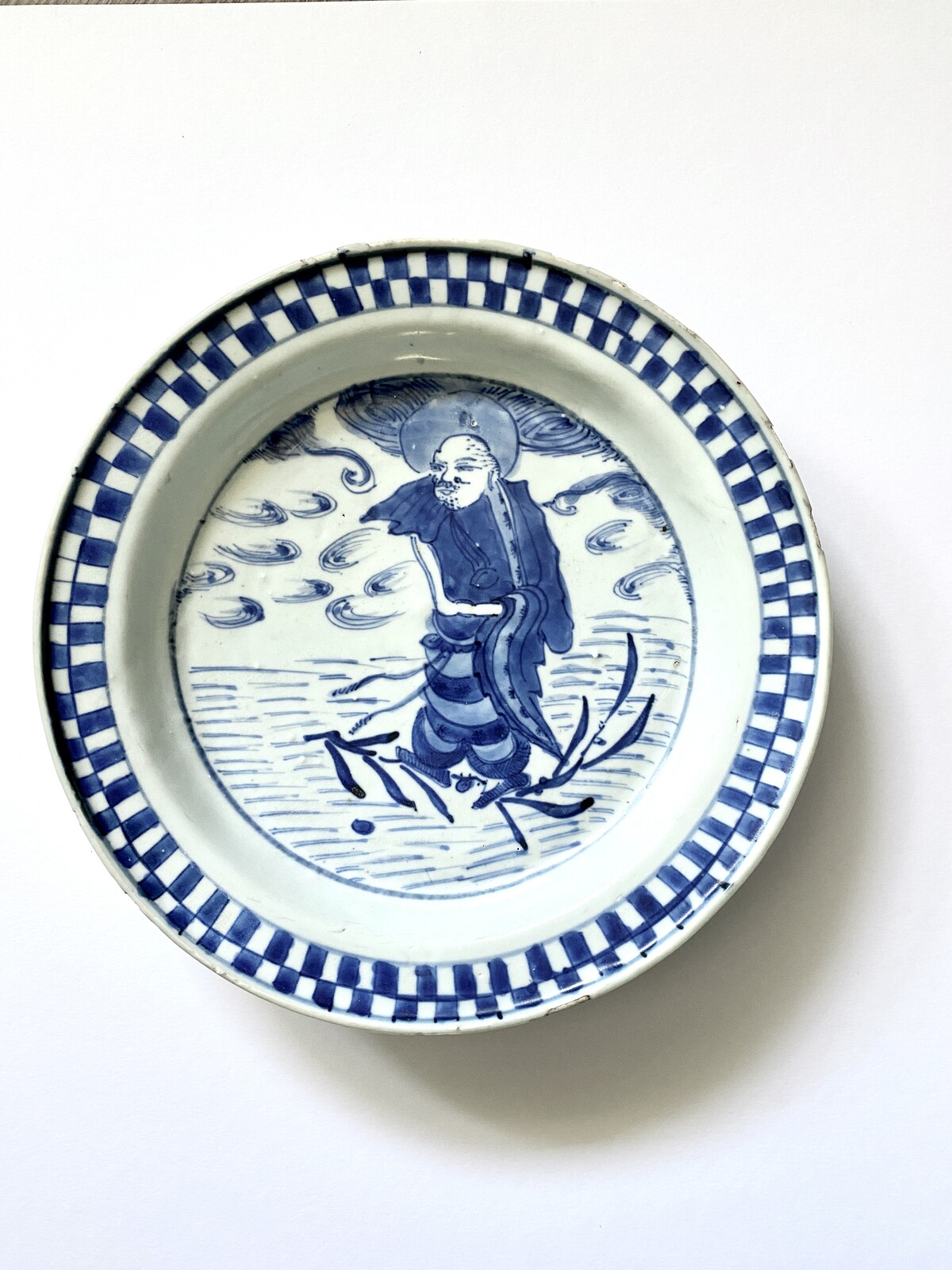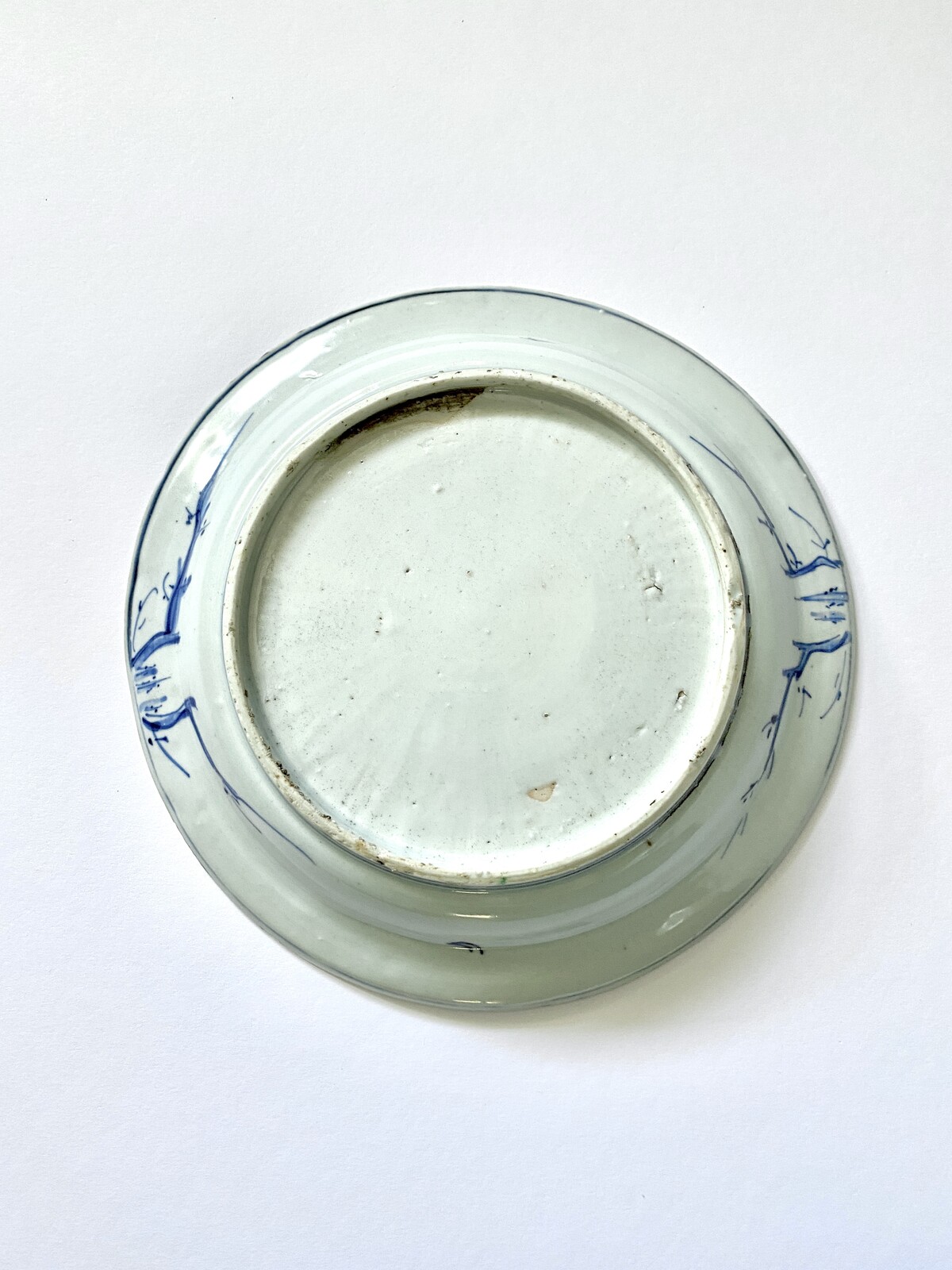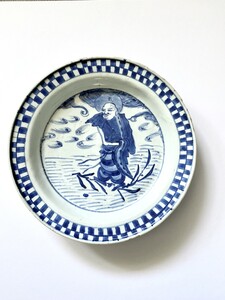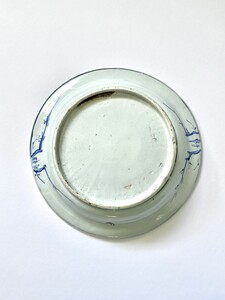Tianqi (1621-1628)
The shallow dish has a slightly sunken centre, rounded sides and an everted rim with upturned lip.
The interior is painted with a figure representing the Indian monk Bodhidharma standing on a bamboo reed while crossing the Yangzi river below swirling clouds. He is clad in long robes and he has a shaved head, mustache and unshaven chin.
The wide rim is painted with a checkerboard pattern in two rows.
The underside has two barren branches on opposite sides of the foot.
Diameter 20.8 cm
Two dishes with the checkerboard pattern are in the British Museum and illustrated in Jessica Harrison-Hall, 'Ming Ceramics in the British Museum' London 2001, no 12:50 and 12:51.
Another is illustrated in Julia Curtis, ' Trade Taste and Transformation, Jingdezhen Porcelain for Japan 1620-1645', New York 2006, Pl. 98
The checkerboard pattern was first introduced in the Tianqi period and seems to appear only on this type of dish for the Japanese market.
Bodhidharma (Damo達摩 in Chinese and Daruma in Japanese) was a semi-legendary Indian monk who lived in the 5th/6th century and who is known to be the founder of Zen Buddhism in China.
He traveled to the monastery Shaolinsi on Songshan mountain in northern China. According to legend he crossed the Yangzi river on a bamboo reed, a scene frequently depicted in Chinese and Japanese art.
After arriving at the monastery he sat in meditation for nine years facing a wall while his legs withered away. He is even said that he ripped off his eyes to avoid falling asleep and where his eyelids fell the first tea plants took root and sprouted, so he is also credited as being the founder of tea.
BF 77 明天啟 為日本市場製作之青花盤
時代:明 天啟,1621至1628年。
特徵:盤心繪達摩一葦渡長江,盤緣裝飾兩圈棋盤式圖案。
尺寸:直徑20.8公分。




